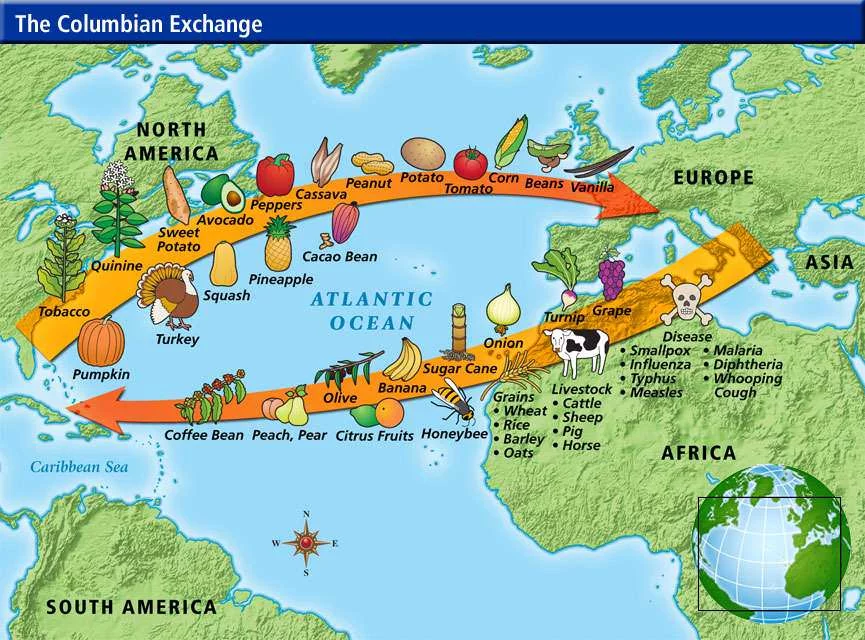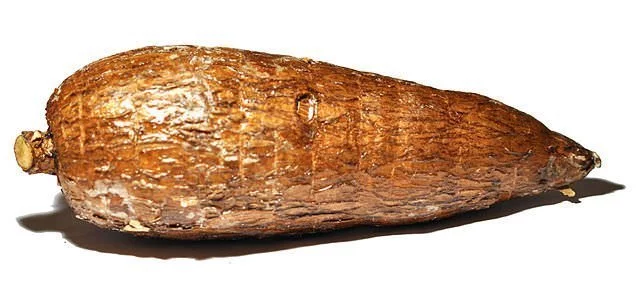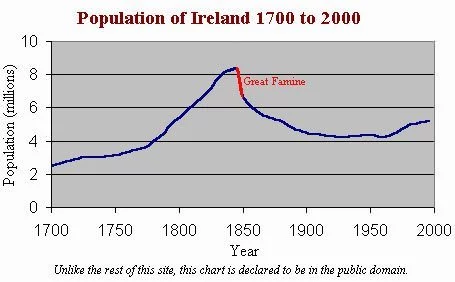Columbian Exchange is a term coined by Alfred W. Crosby in his revolutionary book The Columbian Exchange which was published in 1972. The term refers to the widespread exchange of animals, plants, human populations, diseases, technology and ideas that occurred between Afro-Eurasia and the Americas after Christopher Columbus landed in the New World in 1492. Here are 10 interesting facts on what has changed our lives more than any other thing in history.
#1 BEFORE It THE OLD WORLD HADN’T SEEN A TOMATO
Prior to the Columbian Exchange the Old World had never seen a catfish or a tomato while the Native Americans had never seen a cow or an apple. Due to the Columbian Exchange a lot of crops and animals were introduced to both Old and New World. Crops introduced to Old World include potato, tomato, maize, cacao and tobacco. Crops introduced to New World include rice, wheat, apples, bananas and coffee. Before the Columbian Exchange there was no coffee in Columbia, no chocolate in Switzerland and no pineapples in Hawaii.

#2 OLD WORLD ANIMALS EXPANDED THE FOOD SUPPLY IN THE NEW WORLD
Turkey and Llama are probably the only prominent New World domesticated animals which were introduced to the Old World. However many animals were imported to the New World including horses, cows, chickens, donkeys and pigs. These animals, especially pigs because they breed very quickly, expanded the food supply in the Americas. Also oxen helped to bring more land under cultivation. Due to plenty of meat and large areas of land for agriculture and grazing, the New World nearly never experienced a famine. Abundance of food was the primary reason behind Europeans coming to the Americas in large numbers.

#3 HORSES CHANGED THE LIFESTYLE OF MANY NATIVE AMERICAN TRIBES
Before horses were introduced to the Americas, the main animal used as a beast of burden was llama which could carry a maximum of 100 pounds. Also horses changed the life of many Native American tribes as they left agriculture to lead a nomadic lifestyle based on hunting bison on horseback. Such was the popularity of the animal that horse herds became a measure of wealth.

#4 MANY NATIVE AMERICAN TRIBES WERE WIPED OUT DUE TO IT
Although it can’t be established certainly how many Native Americans died due to the arrival of Europeans but it is estimated that 80-95 percent died in the 150 years following the arrival of Columbus. The most affected regions lost 100 percent of their indigenous population. Though European brutality was a factor, the primary reason behind this was disease. The endemic status of diseases in Europe and Asia over centuries led to many people developing immunity against them but when they were introduced in the Americas, the native people had no natural immunity against them.

#5 SMALLPOX EPIDEMICS IN THE NEW WORLD WERE MORE DEADLY THAN BLACK DEATH
Smallpox, measles, malaria, typhus, chicken pox and yellow fever were among the deadly diseases which were transferred from Old World to New World. Measles caused many deaths but the most deadly was smallpox. The smallpox epidemics caused the largest death tolls among Native Americans killing more people than any war and far exceeding the 200 million deaths in Europe during the Black Death epidemic. A prominent disease which was transferred from the Americas to Afro-Eurasia was Venereal Syphilis and many famous historical figures suffered from it.

#6 IT LED TO A HUGE INCREASE IN POPULATION IN THE OLD WORLD
While the New World was reshaped by the animals and diseases that were brought there, it was the plants from the Americas that had a huge impact on the Old World. Lives of millions of people in Africa, Europe and Asia were changed radically due to the introduction of New World crops. As the crops from the Americas were far more caloric than Old World food, it led to probably the greatest population increase the world had ever seen. Between 1650 and 1850 the population of the world doubled.
#7 NEW WORLD CROPS HAVE BECOME HUGELY POPULAR IN THE OLD WORLD
New World plants like potatoes and maize could grow in soils which were useless for Old World crops. Today China and India are the largest producers and consumers of potatoes in the world. Cassava, a New World crop, is so popular in Africa than many Africans swear that it is native to the continent. Cassava provides more calories than any plant on earth and is the basic diet of more than half a billion people in the developing world. Sweet potato, which is also a New World crop, is poor people’s staple in China.

#8 IRELAND BECAME SO RELIANT ON POTATOES THAT IT LED TO THE GREAT POTATO FAMINE
Potatoes became so popular in Ireland that an average Irish worker ate 10 pounds of potato every day and, surviving primarily on potatoes, the Irish nearly doubled their population between 1754 and 1845. More than one-third of the population of the island was solely reliant on potatoes and when a potato disease called Potato Blight destroyed potato crops throughout Europe in the 1840s it led to the Great Famine in which Ireland’s population fell by more than twenty percent. The Irish Potato Famine was responsible for the death of about 1 million people and a million more emigrated from Ireland.

#9 It LED TO THE HORRORS OF THE ATLANTIC SLAVE TRADE
Columbian Exchange led to commodity crops, goods etc. being produced in the Americas to be sold in Europe. This led to many Africans being transported to the New World as slaves to do skilled and unskilled labor; and this is known as the Atlantic Slave Trade. Most of these slaves were sold by Africans to Europeans and not captured as is believed. From 1500 to 1880 about 12 million African slaves were transported to the Americas against their will. Such were the conditions that about 15% of them died during the journey. Slaves were treated as commodity, were overworked and children born to them became the legal property of their owners.

#10 It HAS LED TO THE EXTINCTION OF MANY SPECIES
After the Columbian Exchange the world’s human habitants have become more genetically and ethnically connected and fewer people have starved. However the diversity of life on earth has diminished drastically and planting crops where they don’t belong has hurt the environment. Man and “the plants and animals that he brings with him have caused the extinction of more species of life forms in the last four hundred years than the usual processes of evolution might kill off in a million”. Christopher Columbus homogenized the world’s biological landscape thereby causing many irrevocable changes.


Really helped with answering my bell ringer. Thank you.
Thank you.I will probably get a 100% on my classwork because of this.
You’re welcome.
hi guys
The potato famine was a man-made disaster. There was enough food in the British isles to feed everyone, but the government followed a policy of letting the Irish starve, partly because of religious bias and also following an economic philosophy which taught that famine was natural and needful to control population.